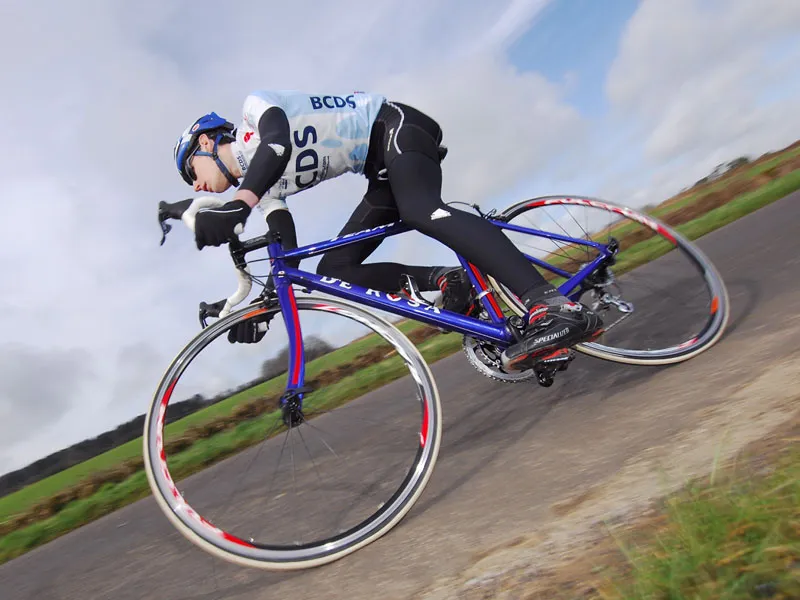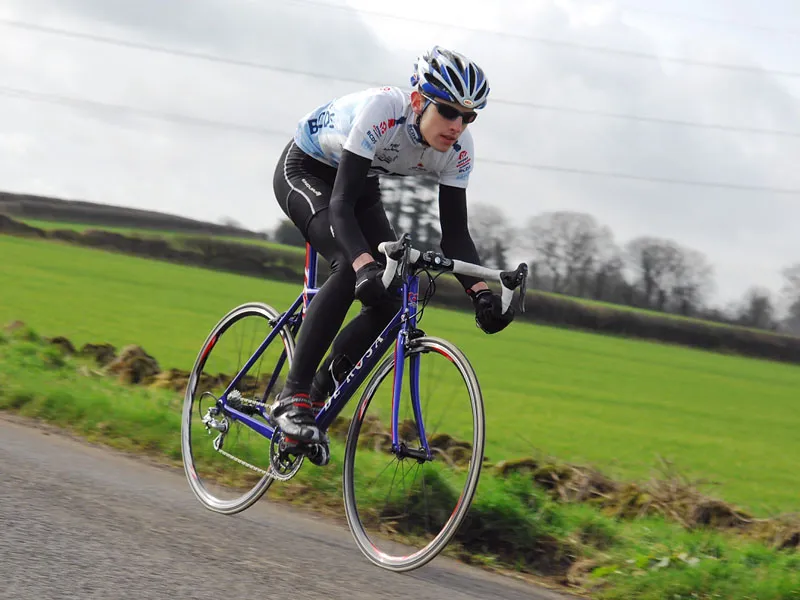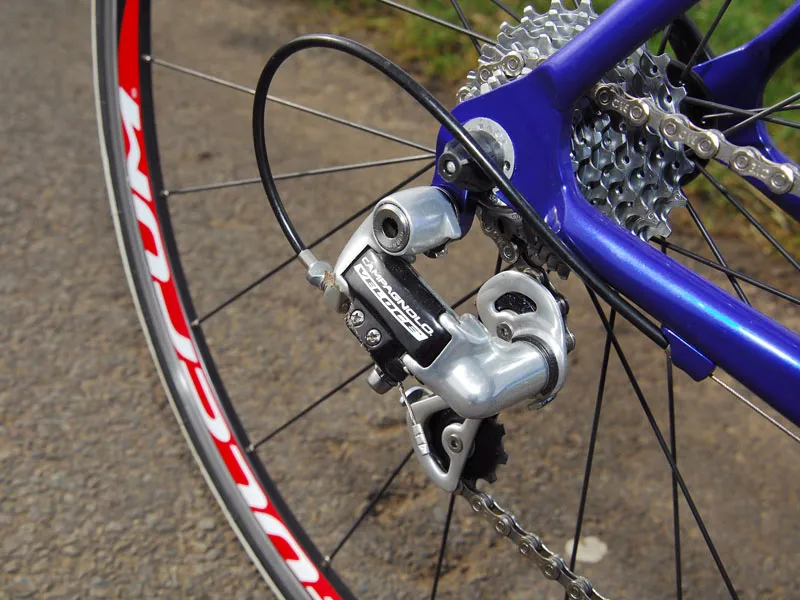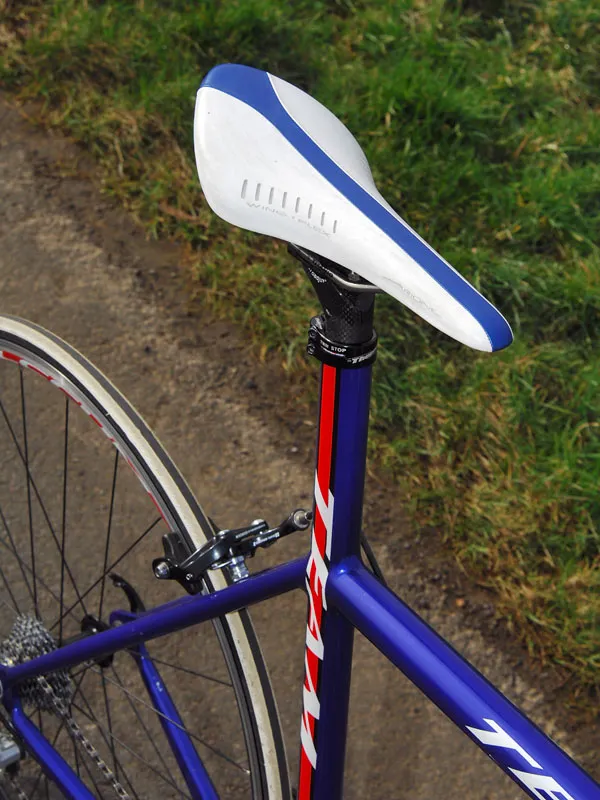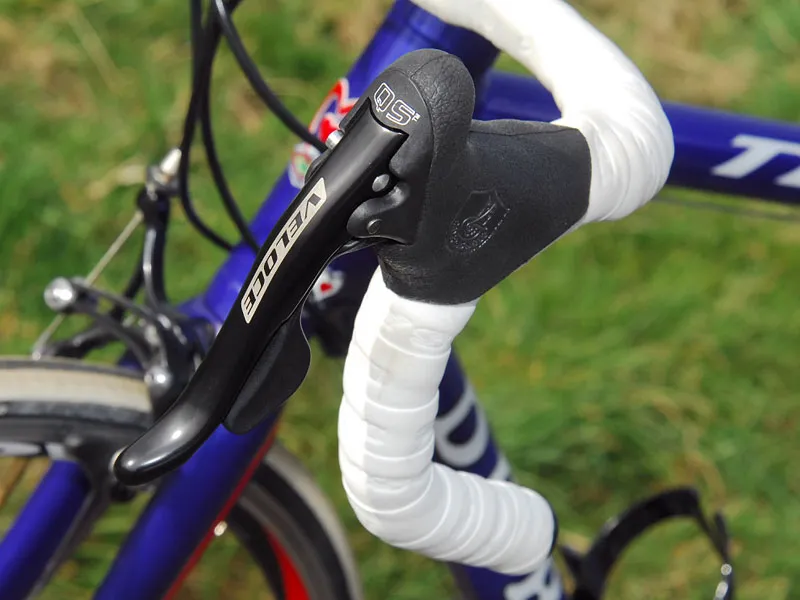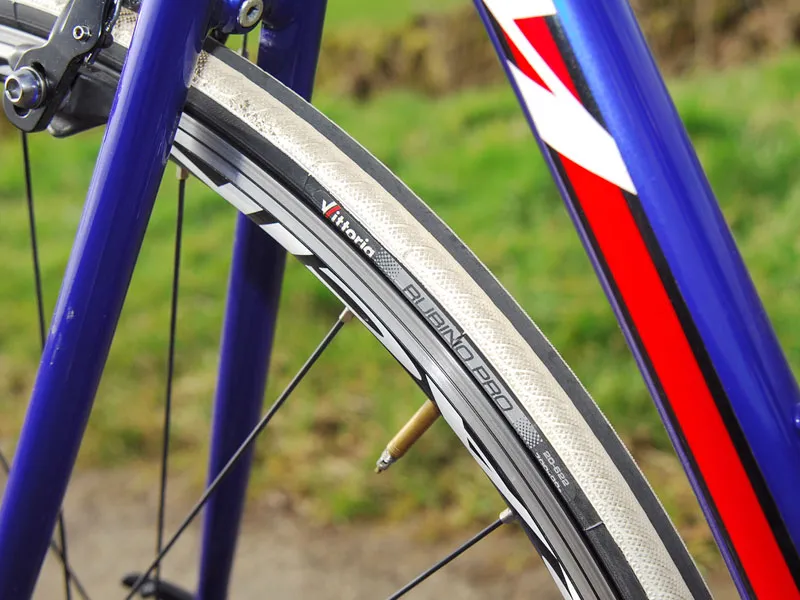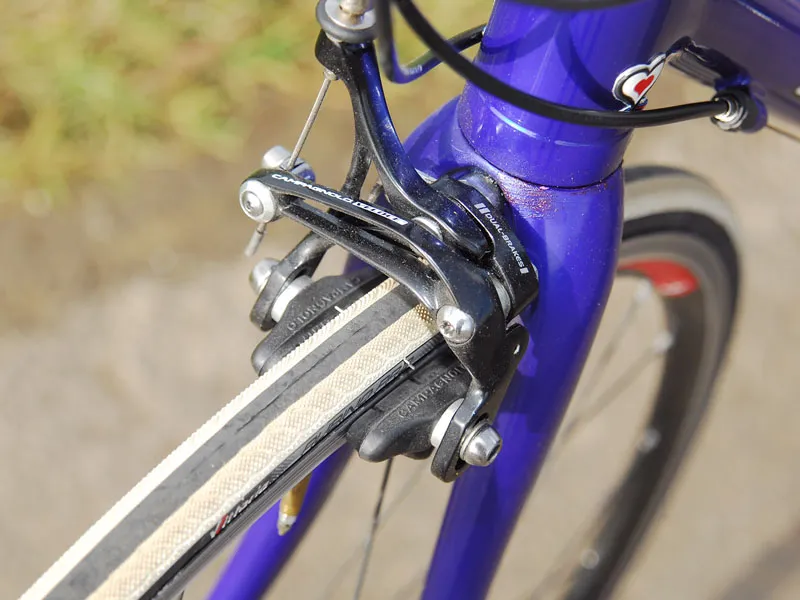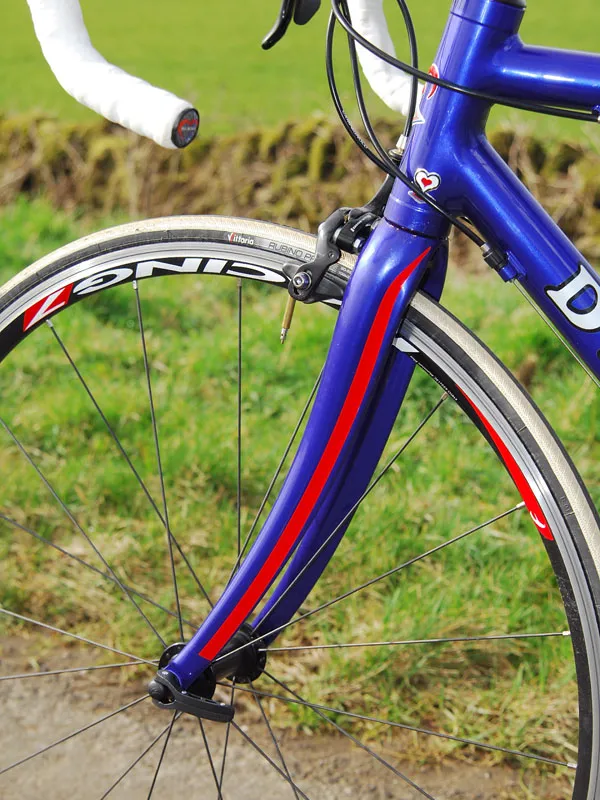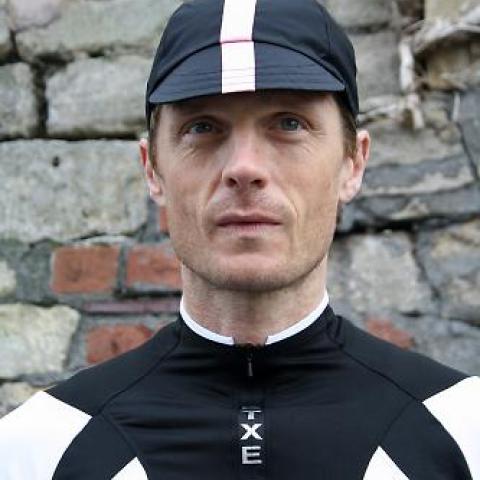De Rosa is a company with a mighty racing heritage a fact that's clear as soon as you throw a leg over the new De Rosa Team. De Rosa has been building high-quality road machines in Milan, Italy for over 50 years. Having made bikes for the likes of the Gianni Motta, Eddy Merckx and Francesco Moser, it’s a family brand with a history up there with that of the Tudors. The aluminium Team may be the cheapest of the five De Rosa models imported into the UK but it's certainly a bike that's true to its racing pedigree.
Ride: Stiff and efficient speedster
If there’s one word that sums up the De Rosa Team, it’s ‘stiff’. Although this doesn’t look a particularly burly bike, the oversized down tube adds plenty of rigidity through the centre of the frame and the bottom bracket obstinately stays put despite bully-boy tactics. We couldn’t get it to flex significantly even when we slung it in a deliberately too-hard gear and bounced up and down on the cranks for out-of-the-saddle climbs.
That rigidity, combined with a reasonably light weight – 18.4lb (8.35kg) for our 66cm model (measured from the centre of the bottom bracket to the top of the integrated seat tube) – means the Team springs into life when you turn the power on. Put some extra effort through the cranks and there’s no delay while the De Rosa decides whether or not it wants to play; you’re rewarded with an instant hit of speed. Fulcrum’s entry-level Racing 7 wheels aren’t too heavy while the ultra narrow (700 x 20c) Vittoria Rubino Pro tyres help keep the all-important rotational weight down too.
The DeRosa can handle the hills as well, the compact chainset matched up to a 12-25 cassette giving you enough low gears for even the sharpest gradients while the short head tube – 15.5cm on our model with a 56cm effective top tube – means you can really get over the front end to muscle it upwards when you stand up on the pedals.
In these days of extended, sportive-friendly head tubes, some people will find that front end too low for long rides. Ours came with only 1.5cm of headset spacers so, even if you flip the stem so it points upwards, you’re forced into an aggressive ride position. It suits the bike’s racy character but you might struggle if you’re not used to such a speed-orientated setup.
Those looking for long ride comfort should also bear in mind that the seat tube extends well beyond the top tube junction – 16cm in our case – so you get little seat post flex to take the sting out of uneven road surfaces. Plus, the undersized air chamber of those slimline tyres offers only limited cushioning. In fact, larger riders will have to pump them up mega-hard to avoid pinch flats and that does make for a firm feel – we’d think about swapping to something with a bit more width for everyday use. Fizik’s Arione saddle is extremely comfy, though, with just enough flex in the hull and padding to absorb vibration and bigger hits without feeling mushy when you pedal.
A short wheel base – 98.5cm on our model – makes the DeRosa highly manoeuvrable and the slightest of weight shifts will let you carve through unexpectedly tight turns without any drama. It’s equally well behaved on fast descents with sharp steering accuracy through the carbon Mizumo fork while Campagnolo’s single pivot Veloce brakes provide good modulation and all-out power once they’re fully run in.
Frame: A touch of Italian class
The DeRosa’s aluminium frame is beautifully made – as you’d expect from the Italian maestros – with smoothed welds and impressive attention to detail throughout. The top tube slopes downwards to give a fairly low standover height (75cm on our model) while the down tube, though not as broad as some, clamps across almost the full width of the bottom bracket to hold it securely in position.
Bullet-straight seatstays and rectangular-to-round section chainstays keep the rear end nice ’n’ tight while the extended seat tube makes for a minimal amount of exposed seatpost, adding a touch of extra rigidity. It’s certainly an eye-catching feature too.
Little metal decals on the side of the dumpy head tube prevent your cables damaging the paintwork while both the steerer and the blades of the Mizuno fork are carbon.
Equipment: Mid-range and dependable
Aside from the Mizuno fork, everything on the De Rosa is Italian. Campagnolo’s mid-range Veloce kit provides light and crisp shifting one gear down the block for every push or a maximum or three upwards, and experience tells us that it’s durable stuff that rarely needs adjusting. The Veloce D-Skeleton brake callipers, dual pivot at the front and single pivot at the back, are a little difficult to align with the rim but they’re light and effective while Deda’s 6061 T6 aluminium cockpit components are strong if fairly basic.
The Team is, though, more expensive than most Veloce-equipped bikes so, effectively, you’re paying a high premium for the frame.
Wheels: Solid rather than spectacular
Fulcrum’s entry-level Racing 7 wheels come at a reasonable weight – 1,202g up front and 1,716g at the rear, complete with tyres and cassette. The quality of the machined aluminium rims is high and you get a wear indicator to tell you when the braking surface has had its day. The sealed bearings are decent too and the hubs are fairly well-protected against the weather although we’ve known rain to get in during really wet rides requiring a spot of TLC with the spanners and grease.
The 20 front wheel spokes are radially laced and so are the eight on the non-driveside at the rear; the 16 driveside ones are three-cross. A small amount of flex can result in brake rub when you throw the bike about out-of-the-saddle, but for a £120 wheelset they’re impressively stiff.
Vittoria’s Rubino Pro tyres are good high-mileage performers that offer a compromise between durability and grip. We’d question the wisdom of speccing the narrow 20C model on an all-round sports bike, though. We ended up with a couple of snake-bite flats – where the inner tube gets pinched between the rim and the road – when we hit unseen potholes during evening testing. Fair enough, you can avoid getting them by pumping the tyres right to the limit, but on an already stiff frame that makes for a harsh ride. Far better to keep things more forgiving by going for wider treads to start with.
Summary: Fast and efficient – as long as you like the ride position
The De Rosa’s racy geometry won’t be to everyone’s taste – many sportive riders, especially, will prefer something more upright and relaxed for long days in the saddle. But if you’re looking for an all-round sports bike and you can handle a low and stretched ride position, the Team has lots to offer.
De Rosa’s heritage is clear in the beautifully made and super-efficient frame. It really is a high-quality piece of workmanship that provides a solid platform for all your effort and it’ll easily handle upgrading at a later stage when the components wear out.
You are, though, paying for that classy chassis with a spec that’s workmanlike rather than spectacular… which is a reasonable pay-off. We’d always prefer to invest most heavily in the frame. All we’d be in a hurry to change would be the skinny tyres, and that’s easily done. Then, fast and manoeuvrable, the De Rosa is ready to fly.
